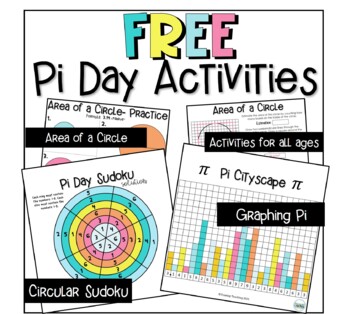Treetop Teaching
1.5k Followers
Grade Levels
5th - 7th
Subjects
Resource Type
Standards
CCSS7.G.B.4
CCSSMP2
Formats Included
- PDF
Pages
9 pages
Treetop Teaching
1.5k Followers
Description
This resource includes many activities on Pi Day that can be used in the elementary or middle school classroom. It makes a great addition to any Pi Day celebration.
Pi Day activities for elementary:
- Graph the digits of pi using a bar graph to make a cityscape
- Solve the Pi Day Sudoku in a circular shape (two levels of difficulty)
Pi Day activities for middle school:
-Derive the formula for area of a circle using estimation
-Practice calculating the area of a circle given the diameter or the radius
- Graph the digits of pi to make a cityscape
- Solve the Pi Day (in a circular shape) Sudoku -two levels of difficulty
Total Pages
9 pages
Answer Key
Included
Teaching Duration
N/A
Last updated Mar 13th, 2021
Report this resource to TPT
Reported resources will be reviewed by our team. Report this resource to let us know if this resource violates TPT’s content guidelines.
Standards
to see state-specific standards (only available in the US).
CCSS7.G.B.4
Know the formulas for the area and circumference of a circle and use them to solve problems; give an informal derivation of the relationship between the circumference and area of a circle.
CCSSMP2
Reason abstractly and quantitatively. Mathematically proficient students make sense of quantities and their relationships in problem situations. They bring two complementary abilities to bear on problems involving quantitative relationships: the ability to decontextualize-to abstract a given situation and represent it symbolically and manipulate the representing symbols as if they have a life of their own, without necessarily attending to their referents-and the ability to contextualize, to pause as needed during the manipulation process in order to probe into the referents for the symbols involved. Quantitative reasoning entails habits of creating a coherent representation of the problem at hand; considering the units involved; attending to the meaning of quantities, not just how to compute them; and knowing and flexibly using different properties of operations and objects.





